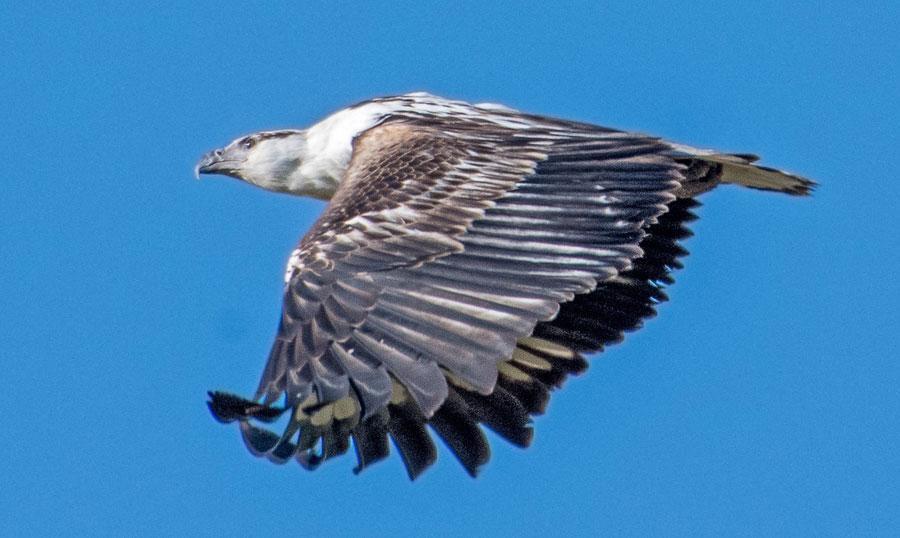African Fish-Eagle - Visarend
Botanical Name: Haliaeetus vocifer
Afrikaans name: Visarend

You needn’t be a serious birder to recognise the yodelling yelp of this striking raptor. Often described as the sound of Africa, the sound evokes lazy rivers and palm-fringed lakeshores, often in duet with the grunting of hippos. And the bird itself, in its black, white and chestnut finery, is equally unmistakable.The African fish eagle, or to distinguish it from the true fish eagles, the African sea eagle, is a large species of eagle found throughout sub-Saharan Africa wherever large bodies of open water with an abundant food supply occur.
Description:
The African fish eagle is a large bird, and the female, at 3.2–3.6 kg is larger than the male, at 2.0–2.5 kg. This is typical sexual dimorphism in birds of prey. Males usually have wingspans around 2 m, while females have wingspans of 2.4 m. The body length is 63–75 cm..
The adult is very distinctive in appearance with a mostly brown body with a white head like the bald eagle and large, powerful, black wings. The head, breast, and tail of African fish eagles are snow white, with the exception of the featherless face, which is yellow. The eyes are dark brown in colour. The hook-shaped beak, ideal for a carnivorous lifestyle, is yellow with a black tip. The plumage of the juvenile is brown in colour, and the eyes are paler compared to the adult. The feet have rough soles and are equipped with powerful talons to enable the eagle to grasp slippery aquatic prey. While this species mainly subsists on fish, it is opportunistic and may take a wider variety of prey such as waterbirds. Its distinctive cry is, for many, evocative of the spirit or essence of Africa.The call, shriller when uttered by males, is a weee-ah, hyo-hyo or a heee-ah, heeah-heeah.
Food:
Specialises in hunting fish, gracefully swooping down to the water surface to grab a fish with its talons; it may even catch fish straight from the waves of the sea! Fish that weigh under about 2 kg are lifted out of the water and carried to a perch to be eaten, but if the fish is larger than 3 kg, the fish-eagle drags to the shore using its wings as paddles. It also hunts other animals living on or near the water, such as waterbirds, reptiles and small mammals.
Distribution and habitat:
This species is still quite common near freshwater lakes, reservoirs, and rivers.Occurs across sub-Saharan Africa; in southern Africa it is locally common in much of the region, excluding the arid Namib Desert, Kalahari and much of the Karoo. It generally favours large water bodies, ranging from estuaries to rivers and man-made impoundments, such as dam
Source
Images: Brian Culver and Nature and Bird Tour The Gambia.
Text: Wikipedia and other various internet sites
Call us and schedule your listing today! Contact Us
Copyright © 2025 Hermanus Online Magazine. Web Development by Jaydee media.

